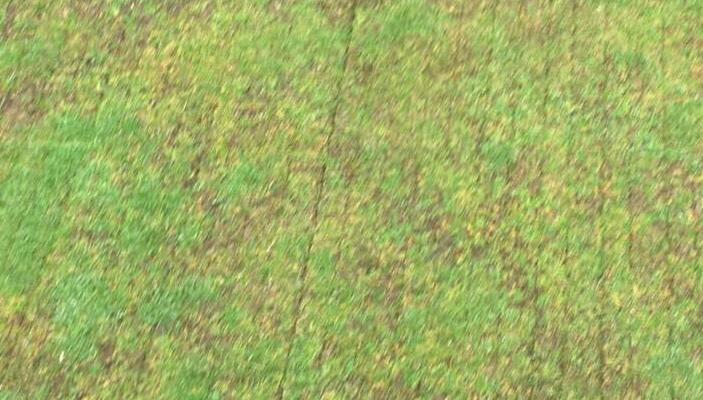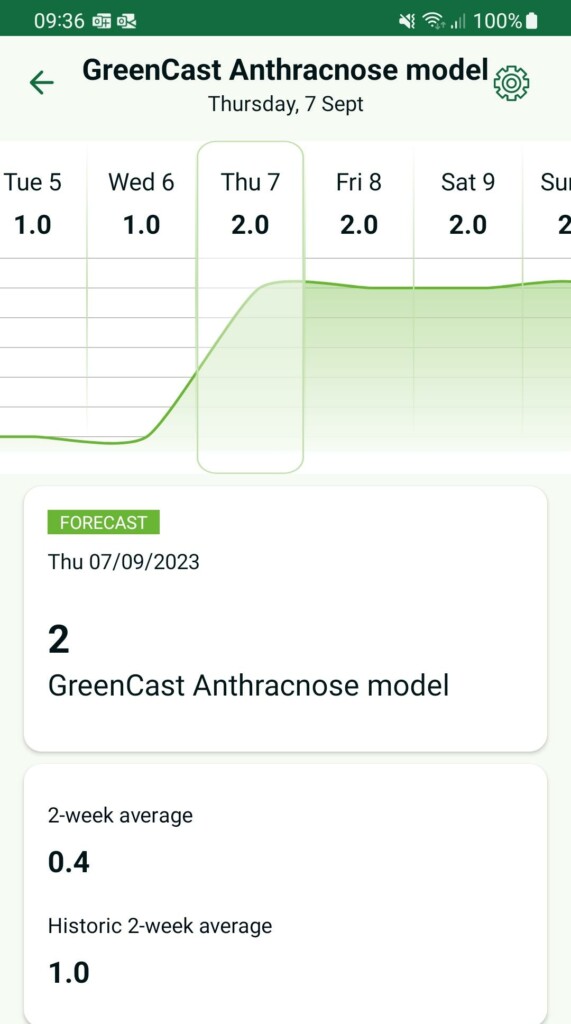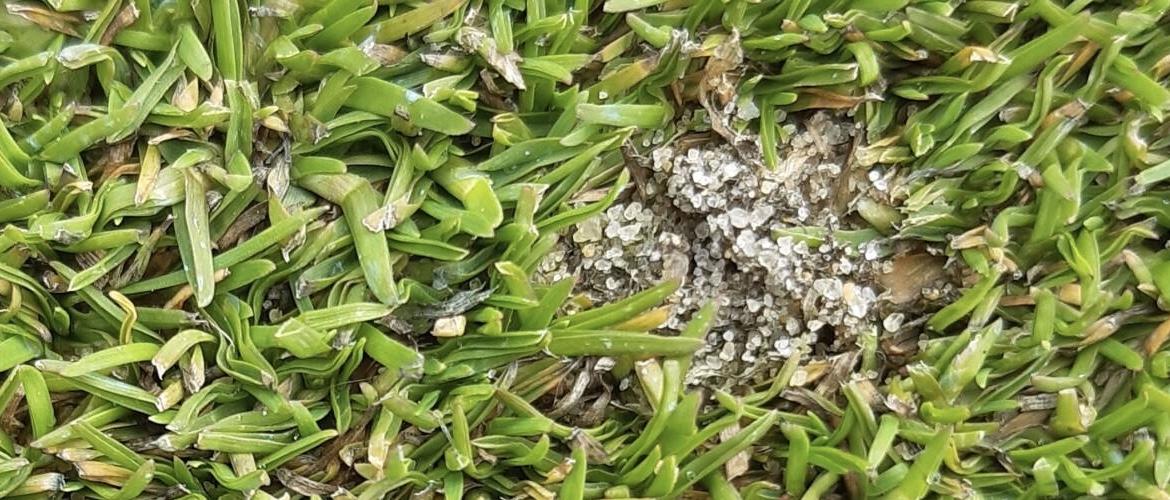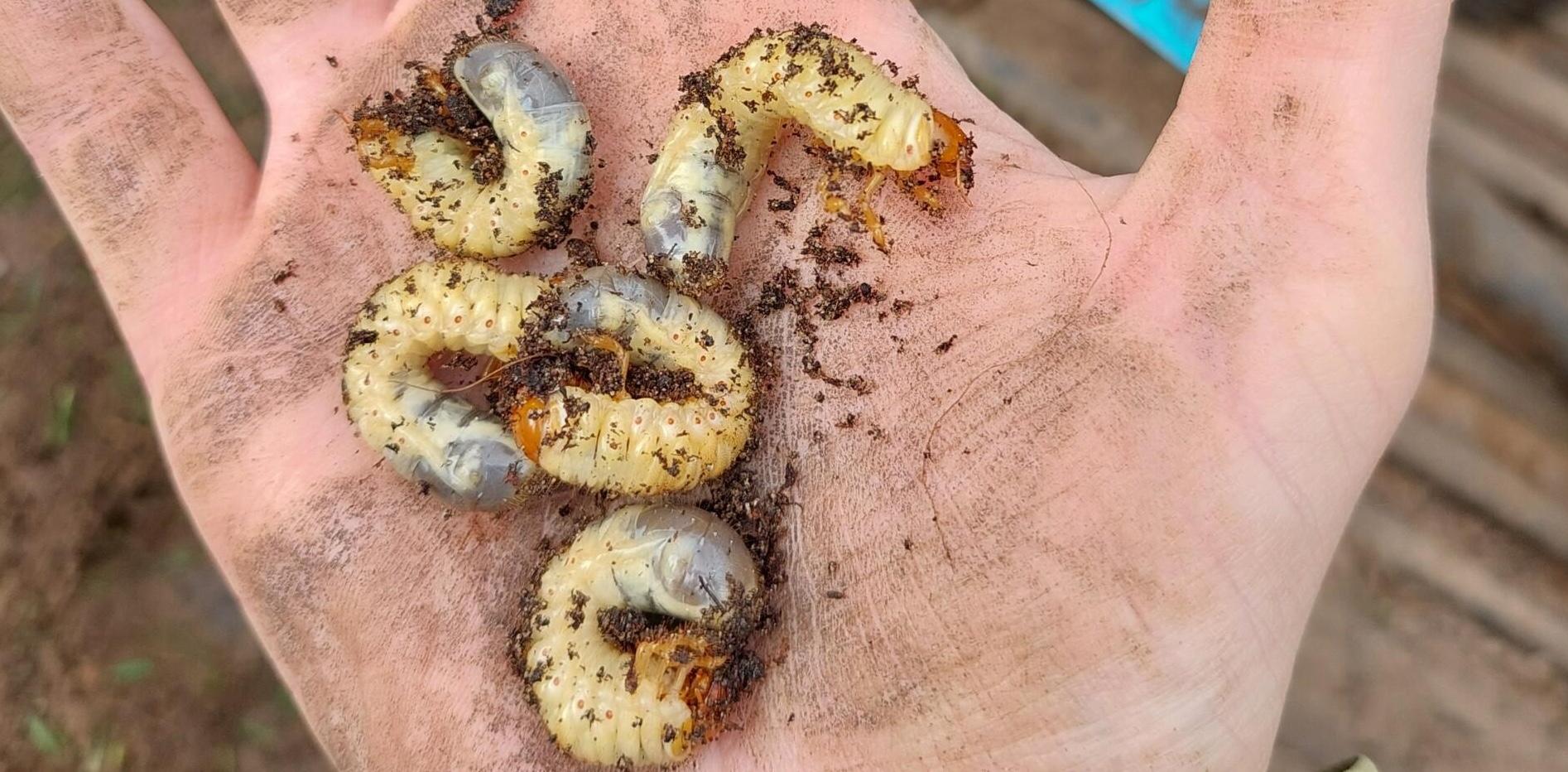Friend or Foe?
Anthracnose is a disease with the ability to divide the room.
Some will say “its ruining surface quality” and others to “let it run, its the greenkeepers friend”
Where you sit will depend on what you can tolerate happening in your surface, and what species composition you have.
If your in a links situation and you’ve only got a very small amount of Poa in the greens then timely overseeding may be to your advantage.
But that’s not for all situations, and there needs to be a conscious effort to backfill disease scars. These will just as readily be filled by even less desirable course grasses, broad leaf weeds or moss if not managed.

Any disease which can lead to loss of turf cover has the potential to negatively impact playing quality, especially smoothness of ball roll, so it’s important not to let it get out of hand and closely monitor when environmental pressures push up the disease risk.
You can see in the below the results of an anthracnose trial at the STRI 2021, where the biostimulant Hicure has done some work to relieve turf stress, this might be an option in low pressure years.
But FR321 has really managed to curtail the disease flare up.

Glenn went to visit these trials last year and made a short video to run through what he was seeing. Click here to see the video.
We’ve got more trials up at the STRI this year and it was great to visit them last month to look at how they were progressing.
Anthracnose pressure looks to be rising in the next week or so as the temperatures climb for our ‘Indian summer’.
I’m based in South Wales and with the heat the Greencast Anthracnose model, in the nearly ready to release TurfAdvisor app is climbing to 2 out of 4. (4 being the highest pressure from the environmental conditions).
If you’re in a good place turf health wise, low stress and with cultivars which are more tolerant to Anthracnose then a rating of 2 is probably not a worry.
But if you’ve already had some Anthracnose trouble this season, and you’ve had to push the surfaces hard for whatever reason and feel they may be a little stressed then its worth looking at what you can do to reduce the risks, and consider preventative action.
You can see below the Anthracnose risk rising to 2 for Cardiff. Which is higher then where we are usually at this time you year (historically 1 for this period).

Glenn did a blog last year on getting back in control of Anthracnose, including the recommended cultural practices that can help reduce the risks of outbreaks including getting nutrition right and the effect cutting height can have on disease pressure. Read that blog here.
As always in Anthracnose is something you’ve not struggled with before then you can read up on the disease on the SyngentaTurf UK website, which will run you through the ITM strategies developed to keep surfaces in good condition. Read more here.
It’s a challenging disease as the symptoms can look like a lot of other things; drought stress, and general dying of leaf blades.
If you think you’ve got drought stress and you over irrigate this can make the issue worst, but it’s important to maintain adequate moisture in the root zone also.




